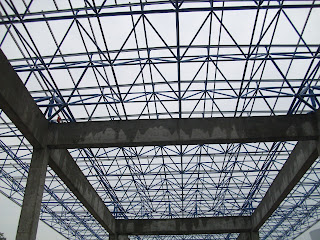New Trends in Sports Complexes: How Does Space Structure Reshape City Landmarks?
Sports complexes are gradually evolving from single-purpose stadiums to multifunctional spaces integrating sports, commerce, cultural tourism, and urban exhibitions. To achieve this diverse layout, the architectural structure must be both flexible and iconic. Consequently, more and more projects are choosing to utilize space structures.
1. Wide-span Design, Accommodating Multifunctional Utilities
Sports complexes typically incorporate diverse functions such as gymnasiums, performance halls, shopping areas, and leisure zones.
Space structures provide large, column-free spaces, facilitating flexible zoning and future renovations.
The same venue can easily transition between different uses (e.g., sports events → concerts → exhibitions).
2. Innovative Design, Enhanced City Image
Space structures support a variety of architectural forms, including curves, domes, and streamlined roofs.
Combined with glass curtain walls or membrane structures, they can create a city landmark.
They offer a strong visual impact, making them suitable for hosting international events or large-scale events.
3. Efficient Construction and Energy Saving and Environmental Protection
Factory prefabrication and modular assembly reduce on-site construction time.
Can be combined with natural lighting systems, ventilation vents, and solar roofs to achieve green building goals.
The structure's low weight reduces foundation and support costs.
4. Case Studies
Lusail Sports City, Qatar: A design combining spatial and membrane structures creates a sense of transparency and provides effective sunshade.
Beijing Olympic Sports Center Upgrade Project: Roof renovation using steel grids achieves spatial expansion and energy-saving upgrades.
5. Urban Operational Value
Sports complexes are more than just competition venues; they are also the intersection of commerce and urban culture.
Space structure enables sustainable operation and reusability, extending the lifespan and return on investment.
Space structure is not just a choice of architectural technology; it is a strategic design approach in the era of urban complexes. It elevates sports complexes from "event facilities" to "urban vibrant centers."
Do you think future sports complexes should prioritize multifunctionality or their status as urban landmarks?




评论
发表评论